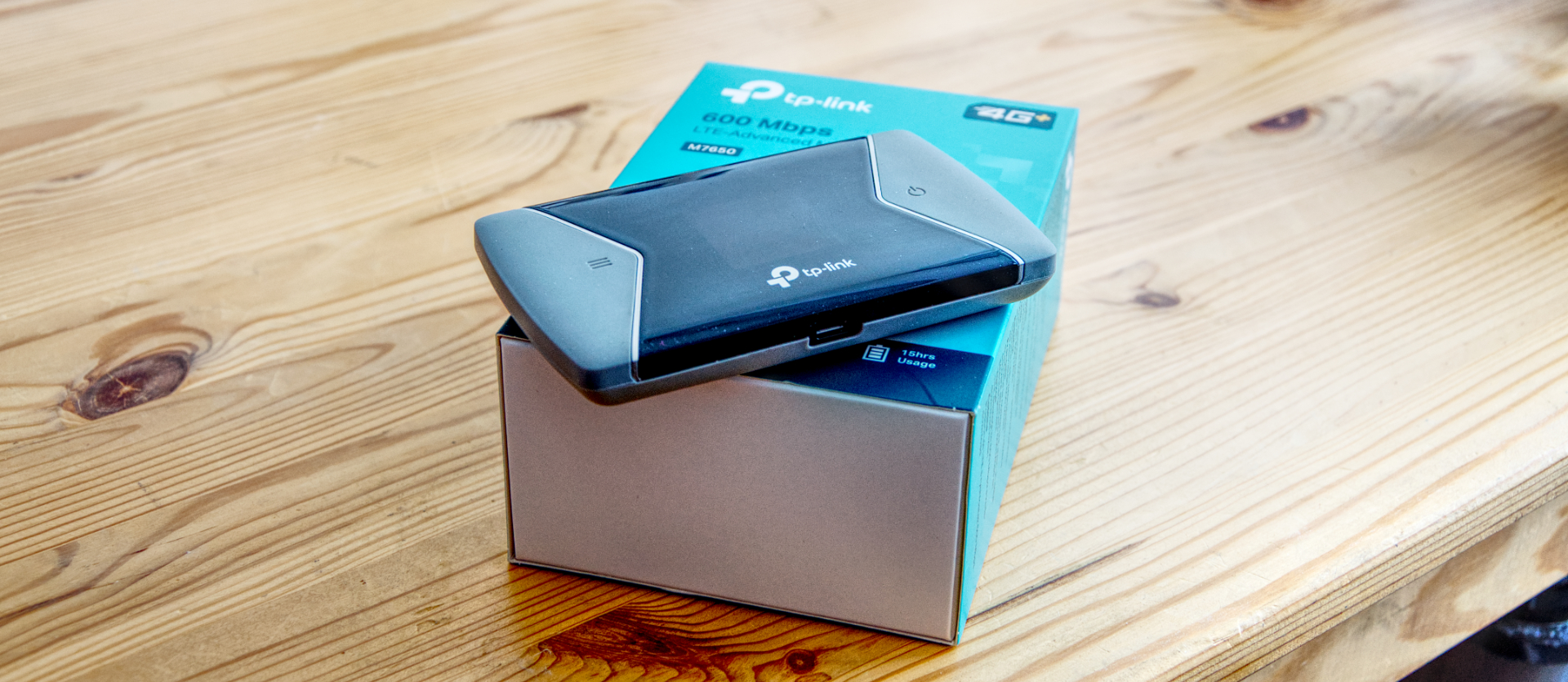
TP-Link M7650: 30-second review
These days, everyone assumes internet connectivity, even if they're halfway up a mountain or in outer space.
The TP-Link M7650 elegantly solves the problem of providing that service to others in your party. It is a battery-powered mobile hotspot that can connect up to thirty-two devices by WiFi.
The M7650 is about the size and weight of a small mobile phone, takes a MicroSD card and a mobile SIM and can connect to a 4G mobile service, which it makes available for others via an 802.11ac WiFi connection.
Setting it up is a matter of inserting the SIM, choosing a suitable WiFi SSID and password, which can be configured through a mobile phone app, and then telling your family or colleagues what the AP is called and the password.
As a wireless router, this is an AC1200 specification dual-band service, and the mobile comms are 4G+ LTE-Advanced, with a theoretical throughput of 600mbps down and 50mbps up. However, obviously, that will be shared between all those using the device, degrading the performance accordingly.
We must also mention that mobile networking isn't a guaranteed speed dependent on location.
Therefore, a device like this tends to put all your mobile communication eggs in one basket, but that doesn't necessarily make it the best plan.
This hardware is relatively cheap, easy to use, and built for purpose, but depending on the environment, an old phone might provide a similar experience for many people.
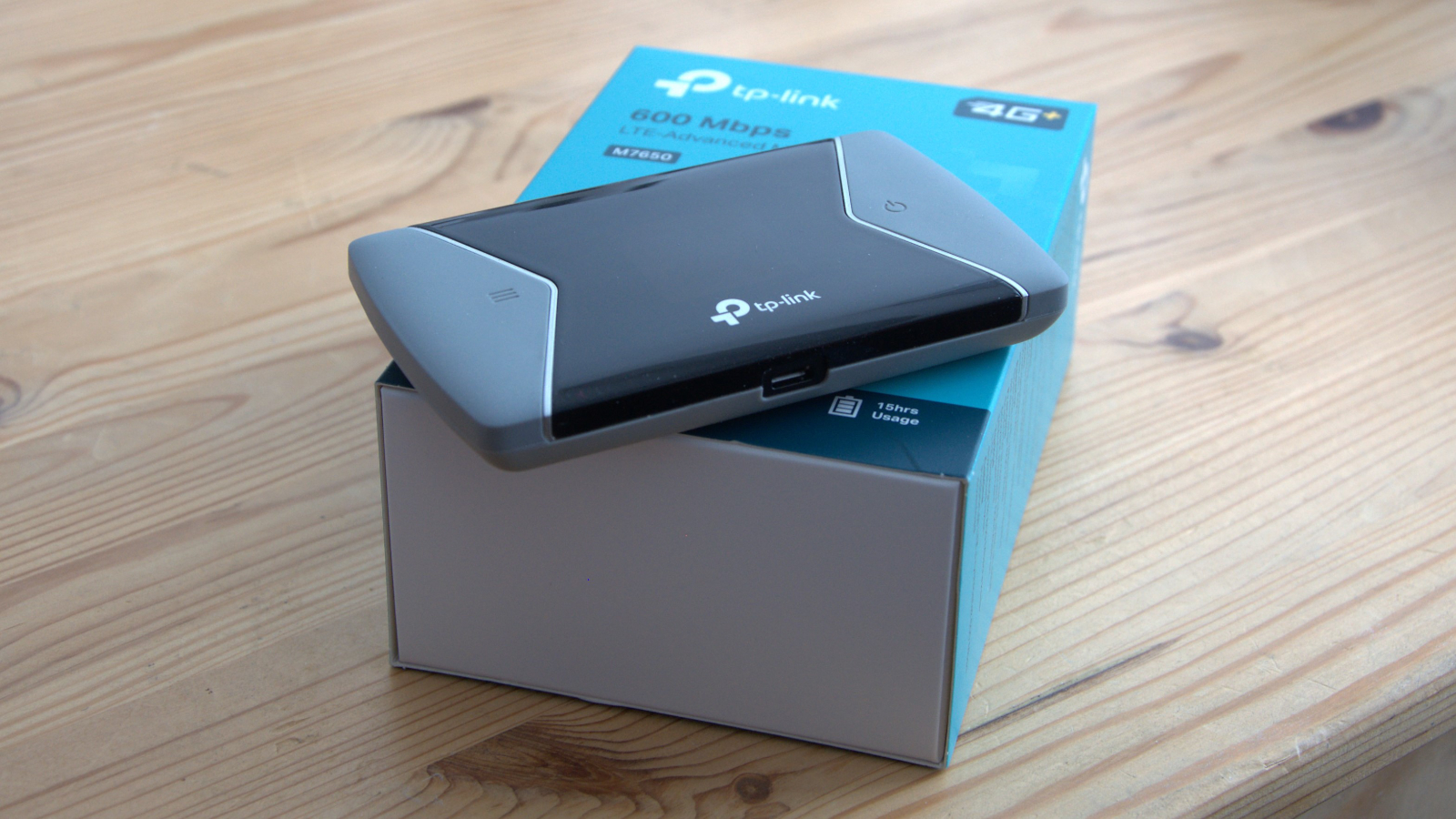
TP-Link M7650: price and availability
- How much does it cost? £168
- When is it out? Available now
- Where can you get it? You can buy it directly from several online retailers, including Amazon.
This device is widely available across Europe, but is missing in action in both the USA and Asia. American and Pacific customers have the lower specification M7350, which only has a throughput of 150mbps, and as both of these products aren’t especially new, it seems unlikely that the M7650 will be launched anywhere else in the future.
For a mobile access point, it's reasonably cheap, especially when you consider the alternatives from Netgear.
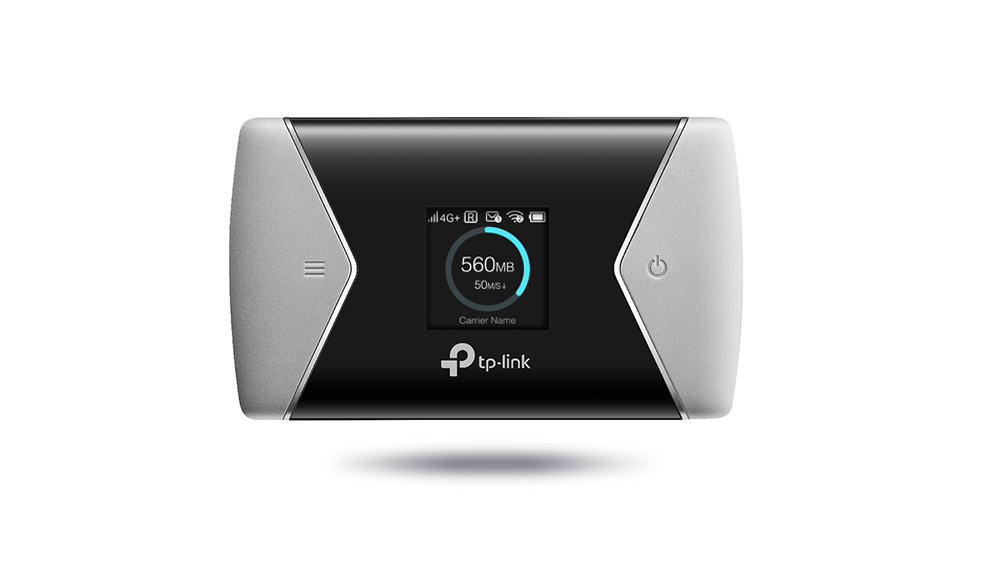
- Value score: 4/5
TP-Link M7650: Specs
TP-Link M7650: design
- Old school
- Small screen
- Web interface
The external nature of this device is rather slick, having the physical mass and size of an old Blackberry phone and a two-tone colour scheme.
The dark central plastic section is where the tiny 1.5-inch screen hides, and the light grey rubberised skill offers a simple interface with two buttons.
But before you get to see that, the M7650 must be disassembled for a mobile SIM to be installed. This is done by removing the rear cover and prising it off with a strong fingernail via a small slot designed for this activity.
With the back removed, the battery can be lifted out, revealing the MicroSD and SIM card locations beneath it. The way this order is dictated by placing the battery over these slots is probably a good idea since the M7650 needs to be powered off before any of these chips are put in or taken out.
What shocked this reviewer was that the SIM card slot is designed for a Micro SIM, not the Nano SIM that has been in common usage for some time. Therefore, TP-Link was probably hoping that when you get your SIM and break it out of the various rings of sizing plastic, you retain them for use here.
Clearly, this hope was forlorn, and a tiny adapter was included in the box to scale up a Nano SIM so it would fit. That this needed to be included strongly hints that it should have been a Nano SIM slot, as the number of people using Micro SIMs these days is relatively small.
This feature is technologically 'old school', and it isn't the only part of this device that could be classified in that fashion. The USB cable used to charge it connects to the device using the now redundant Micro-USB standard, the horrible one with a correct orientation that always breaks when a cable is forced in the wrong way.
It's a mystery why this isn't USB-C, the standard where the orientation doesn't matter, but it's another aspect that makes the M7650 seem to have been made from old phone technology.
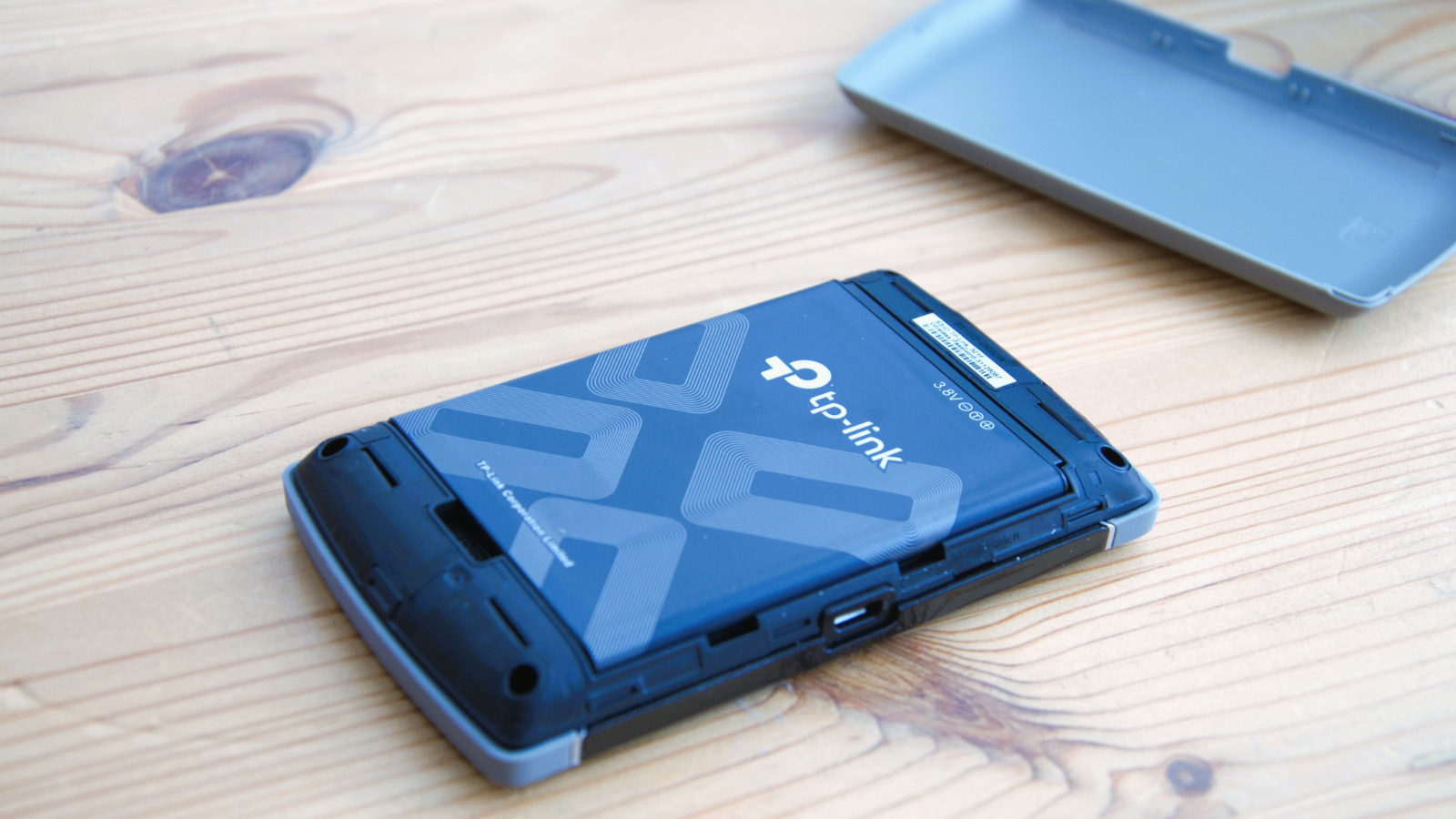
Like with the SIM adapter, a Micro USB cable to USB-A is included for those who have thrown away those horrible cables.
With the SIM in place and the device reassembled, assuming the battery has power, a button on the right front facia will power the device on and reveal a screen that is implausibly small and dim. However, it will show you the name of the service it is connected to and the speed available.
With only one button on the left, navigation is somewhat limited, and to configure the device, it's advisable to use the TPMiFi application or the web interface. The display is so small that its only value is to confirm the device is on, and the screen is impossible to read outdoors.
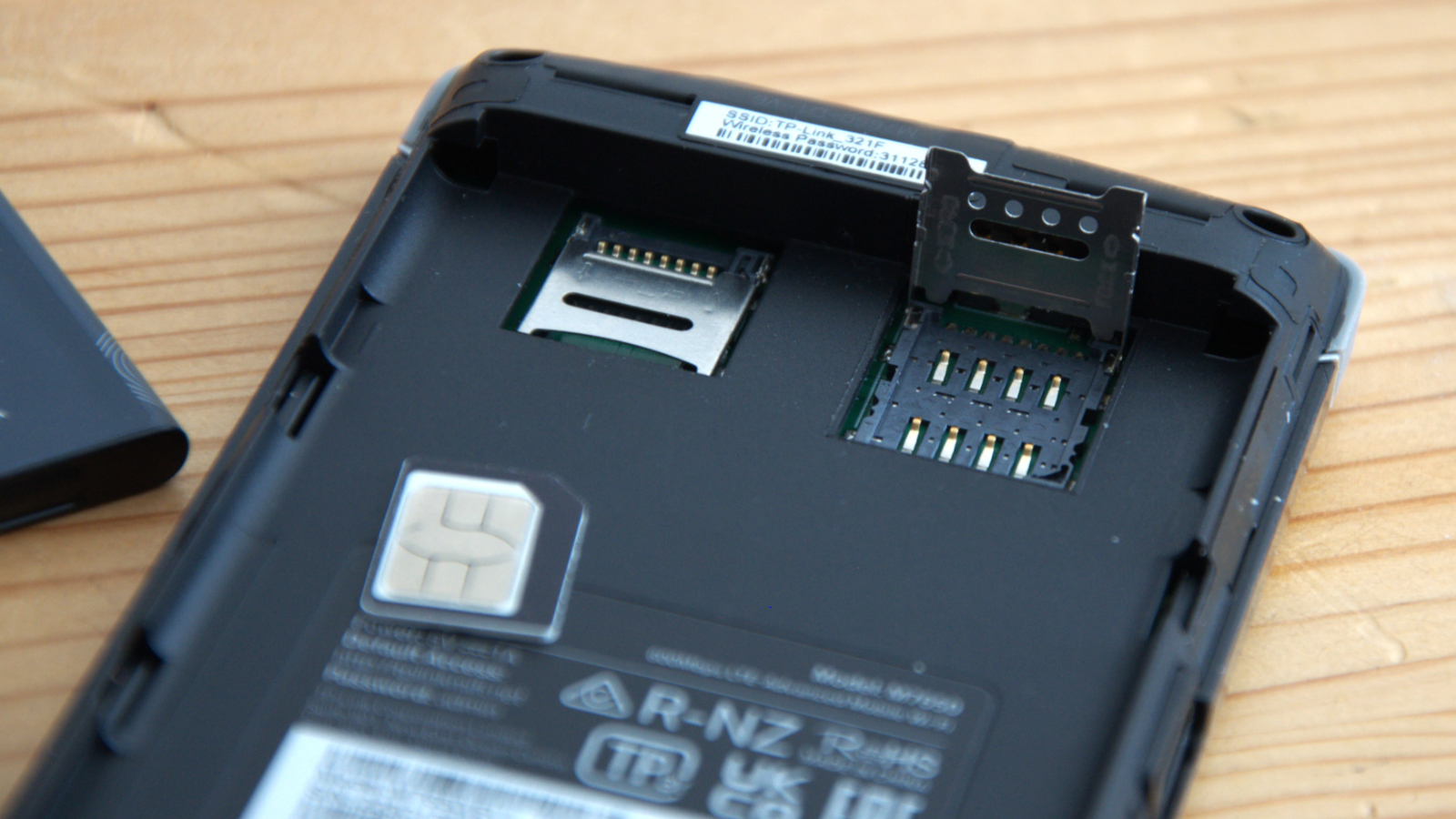
Design score: 3/5
TP-Link M7650: In use
- LTE Cat 11
- USB connectable
- Pick 2.4GHz or 5GHz
Getting this hardware operational is relatively straightforward.
Simply acquire a mobile phone SIM with a data package to use, insert it and connect to the M7650 by WiFi.
You can share files with all those connected from the Micro SD card if you use one of those, but the maximum acceptable capacity is a sad 32GB.
To achieve the fastest speeds it is necessary to connect to the router using 5GHz, and we noticed a drop if the 2.4GHz channel was used. The maximum bandwidth that 2.4GHz has is 300mbps, which is only half what the M7650 is theoretically able to transfer down to over 4G.
However, 5GHz is capped at 867Mbps, which fits better with 4G connectivity.
You can also use a single device directly linked by USB, which might provide the best performance, but only for one chosen piece of equipment.
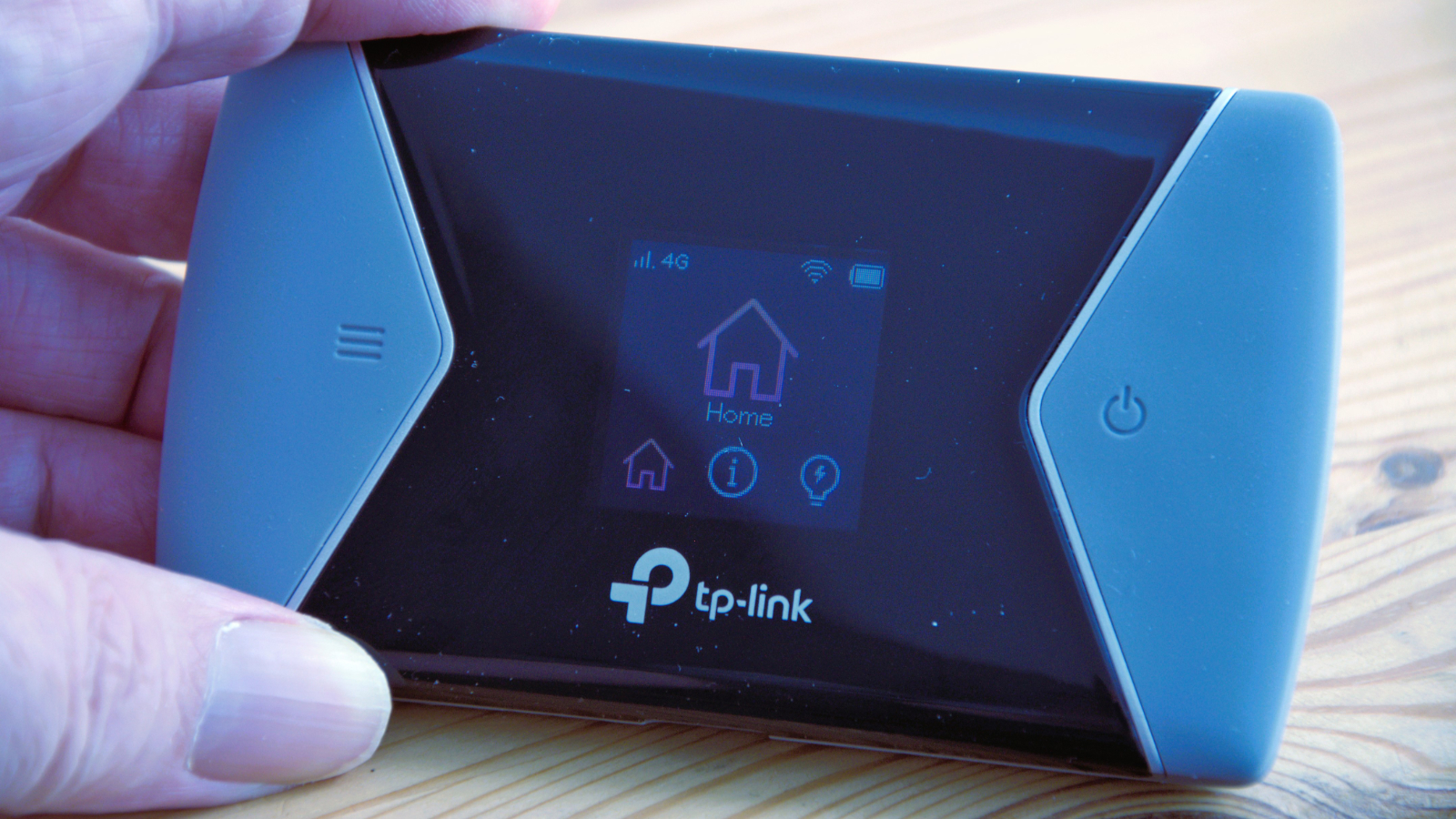
A big snag is that the device can be set to 2.4GHz or 5GHz, but it can't be configured to use both. Because of this limitation, if only one of the connecting devices can use only 2.4GHz, then all of them will be forced to use it.
TP-Link makes a cheaper alternative option, designated the M7350, that is available in the USA. The limitation of the M7350 is that it can only communicate at up to 150mbps, not the 600mbps that the M7650 can offer, in theory.
If the 600mbps download speed is a stretch, then the quoted battery life of 15 hours is an even greater embellishment. Even with a single connected device, getting more than 8 hours out of this device is challenging. Therefore, if you intend to use this away from mains power for a prolonged period, a battery bank might also be a sound investment.
The issues here are a mix of ones that any mobile internet connection suffers due to any QOS standards and the old technology that TP-Link put in the M7650.
A more modern SoC would not only support 5G as an option but also provide support for global bands and be much more power efficient. Since this is repackaged phone technology from at least eight years ago, it comes with all the limitations and inefficiencies of that era.
It works, showing that in many circumstances, the mobile comms technology of the past was dependable up to a point, but it's hardly cutting edge today.
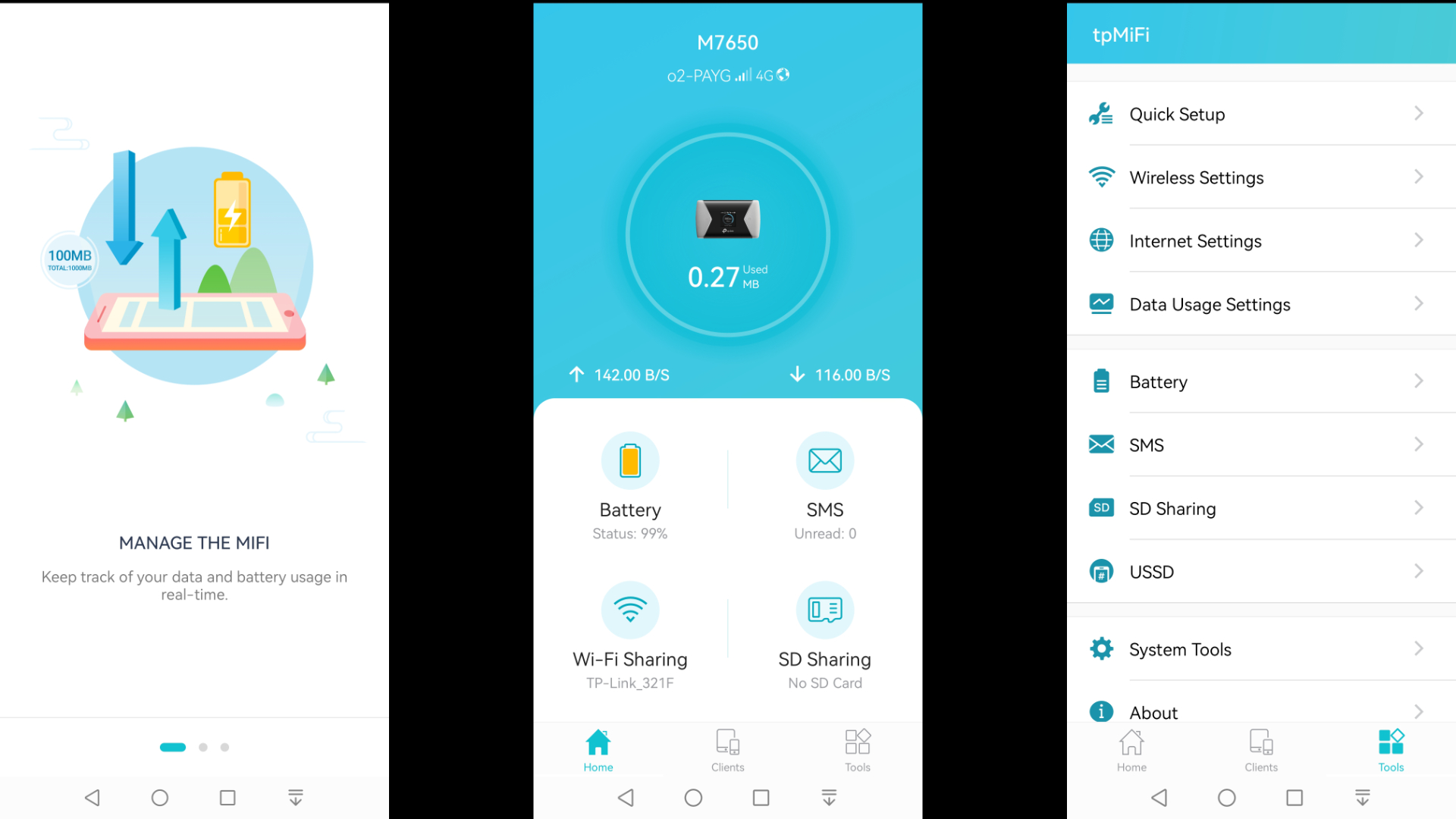
- In Use: 4/5
TP-Link M7650: performance
- 5G comms
- Potential vs reality
- Battery support
The maximum quoted performance is 600mbps down and 50mbps up, which is achieved by using aggregated LTE category 11 on 1800, 2100 and 2600 MHz. Each is capable of 150mbps, and with QAM-256 modulation in play, adding another 30% or more efficiency, this unit could hit the quoted 600mbps.
In our experience, the best performance was closer to 90mbps, but our local 4G service isn't wonderful. But, can it pass that datastream on to those connected?
If you use 5GHz WiFi or USB connection, then yes, but under 2.4GHz WiFi, there is a reduction of at least 10% from the best connectivity.
What's important to accept is that while theoretically, this device can download at 600mbps from a nearby 4G tower, in reality, that's not something you will experience with any mobile router unless maybe it's 5G.
- Performance score: 3/5
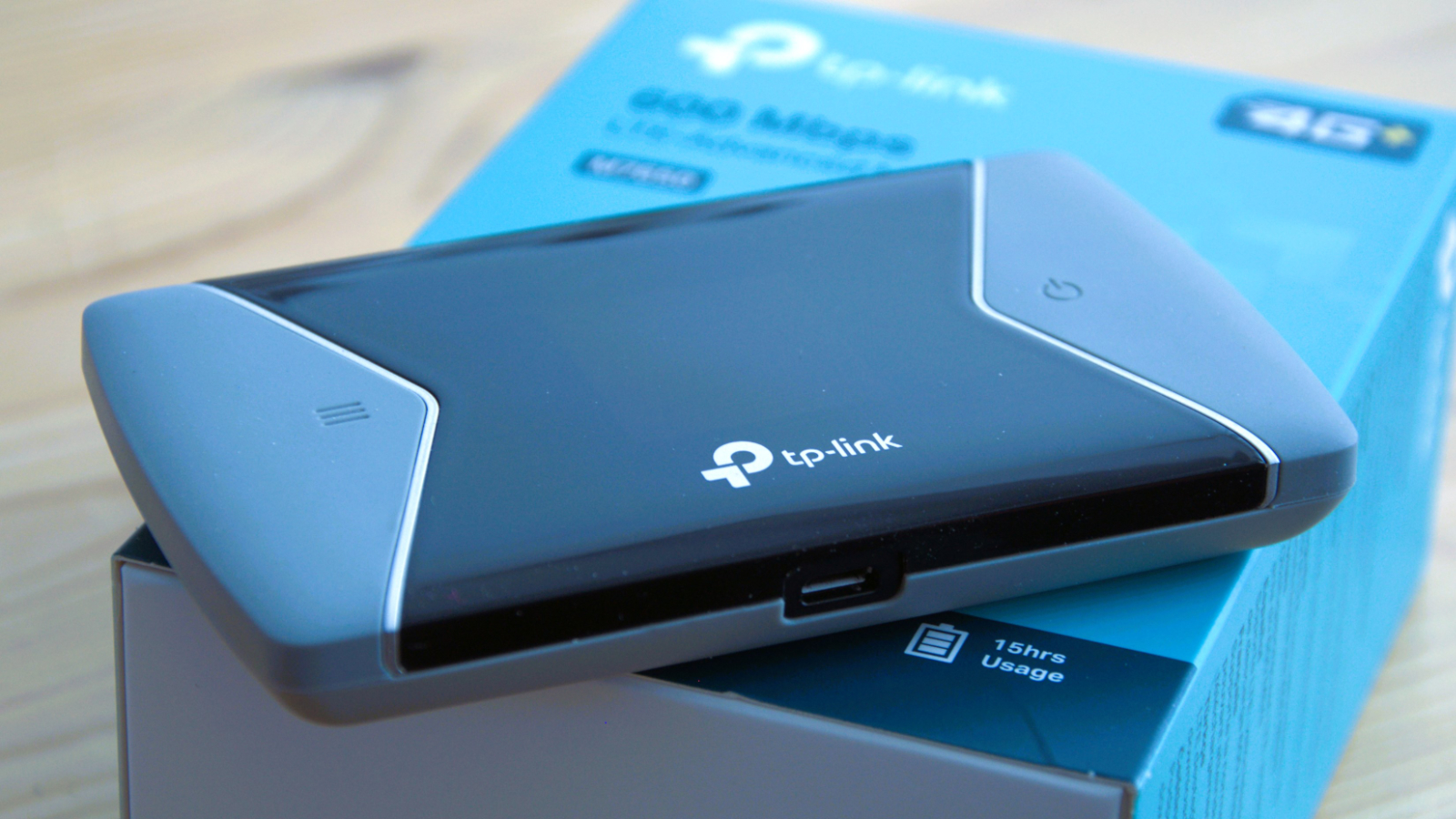
TP-Link M7650: Verdict
For starters, this unit should use USB-C, and the SIM tray should accept Nano-sized cards since we're reviewing it in 2024. However, it first appeared in 2017, and TP-Link has done almost nothing since to upgrade it. In seven years, it's had one firmware upgrade.
Those points aside, along with the almost completely useless tiny display, this is a highly functional piece of hardware that provides the service that TP-Link suggests.
Perhaps a more modern 5G SoC would have provided longer running times with the same-sized battery. It will be interesting to see if TP-Link launches one with that spec and how much it improves battery life. Considering how long this hardware has been in production and it was never tweaked to work in the USA, that might be wishful thinking.
Why this replacement product hasn't appeared is a mystery, but it hasn't.
Many people recommend the Netgear Nighthawk M6 as a 5 G solution, but it costs more than four times the price of this device.
For about half the price of the M7650, you can purchase the Poco X6 Pro, a fully functional 5G phone with a Snapdragon 8 gen3 SoC and global band support. Once you've set up a mobile hotspot, the end result should be better, and you get a spare phone in the bargain.
Perhaps the reason this wasn't replaced is that with so many used phones around, the majority of people will choose to use those rather than dedicated hardware for this job.
Should I buy a TP-Link M7650?
Buy it if...
Don't buy it if...
Didn't find what you wanted? Check out our selection of the best business routers







